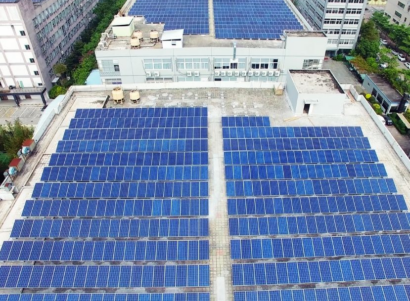The hottest summer ever recorded has come to an end. Yet for the millions of U.S. households that experience utility disconnections each year, cooler temperatures may bring renewed risks. Climate change is leading to more extreme cold in many regions. And while most U.S. states offer some form of weather or health-related relief to protect residents from utility disconnection, some states do not. In these states, the struggle to pay energy bills may exacerbate energy inequity and increase health risks for many lower income households. We talked with Senior Scientist Yunus Kinkhabwala about a recent analysis on utility disconnections within Virginia, where permanent protections from utility disconnection in extreme weather events do not exist.
Utility Bills and Affordability in Virginia
Energy burdened communities are defined as those paying more than six percent of their income toward cumulative utility energy bills. By examining trends in energy affordability, energy burdens, and utility disconnections in communities throughout Virginia, PSE researchers found that 82 percent of the roughly 870,000 Virginia households earning below 200 percent of the federal poverty level are energy cost burdened.
In the figure to the right (top), researchers show data by zip code from the state’s 211 Utility Assistance program, demonstrating which counties have the most requests for utility assistance. The bottom figure shows a correlation between the location of these requests for utility bill assistance per person and energy cost burden, suggesting that requests for bill assistance may be tied to low incomes or high energy bills.

Research from the brief estimated that roughly 24 percent of all Virginia households were energy cost burdened in 2021. Implementing utility disconnection protections can be vital for protecting the health of those who are more vulnerable to having their energy shut-off, especially when temperatures reach dangerous highs or lows. For these communities, utility disconnection protections can provide a social safety net, protecting families from making difficult decisions between paying for housing, medicine, and the fuel needed to heat their homes.
Reducing Energy Burdens
According to their research in this analysis, one way to reduce energy burdens is through place-based utility disconnection protections which are designed around projected and current climate conditions. These types of protections provide additional climate resilience and health benefits by protecting the most temperature-vulnerable populations, such as the elderly and young children, from the impacts of utility disconnections during extreme weather events.
Another strategy is to increase access to data, specifically publicly available data, on utility disconnections and arrears (a debt or payment that is still outstanding after the payment due date has passed). Requiring utilities to report disconnection rates can incentivize new policies to minimize the disconnection of vulnerable households at dangerous times.
“Right now it’s difficult to know the extent of the problem until an extreme weather-related tragedy occurs and somebody loses their life. To truly understand the problem, you have to have the data,” says Dr. Kinkhabwala.
Publicly available data is essential for accurate and relevant analysis of programs and policies. A lack of data presents obstacles for states like Virginia where utility disconnection and arrears data is only available upon request. If this type of data was publicly available it would allow researchers and the public to evaluate relevant questions such as, whether disconnections are greater due to non-payment or utility policies. Policy development for states can also be enhanced through access to data on disconnections, customer incomes, and monthly energy bills.
Increasing Climate Resilience
As climate change increases the likelihood of extreme weather, the absence of utility disconnection protections in states like Virginia emphasizes the need for sustainable long-term solutions.
“Many low-income households struggle to pay their bills year-round,” says PSE Senior Scientist Yunus Kinkhabwala. “With climate change increasing extreme weather, these households are more likely to suffer through power outages when dangerously hot or dangerously cold.”
According to Dr. Kinkhabwala, state policies requiring disconnection protections should apply to all utilities, including investor-owned, municipal, and cooperatives. By making utility data available, Kinkhabwala believes it’s possible to pinpoint and adopt the most effective protection strategies across different utility territories. “Your access to utility protection shouldn’t depend on where you live and who you choose to be or your utility provider. It should be a right that everybody has access to.”
Dr. Kinkhabwala hopes that by continuing to examine the drivers of energy affordability across the U.S., researchers can help identify new avenues for states to protect energy burdened households when they need it the most.
















